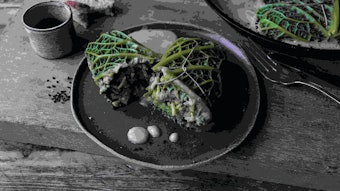Over the past few years, some who would like us to revise our eating habits have advocated a kind of simplistic asceticism. They argue that we should eat simply and functionally, eschewing wherever possible ingredients which are processed or which do not perform a primarily nutritional role. They reserve for particular disdain those ingredients we use principally for their aesthetic value, such as colors and flavors. These they dismiss as “cosmetics,” with the implication that they have no value. Few comments have been so insensitive to history, culture, and pharmacology.
This paper discusses a traditional category of those "cosmetics," the spices and herbs--broadly called "spices"--and some of their aspects.
We have used spices for millennia for their flavoring value, but they have always filled other roles as well. Their use must have preceded the development of writing, since many of our earliest written records refer to them as well-known and highly prized commodities. There are references in Mesopotamian and Egyptian writings to anise, indigenous to Egypt; cinnamon, which even in those days, had to come by boat from Ceylon; coriander, cumin, and dill. Undoubtedly, the Egyptians use others, but their identity is less certain.










